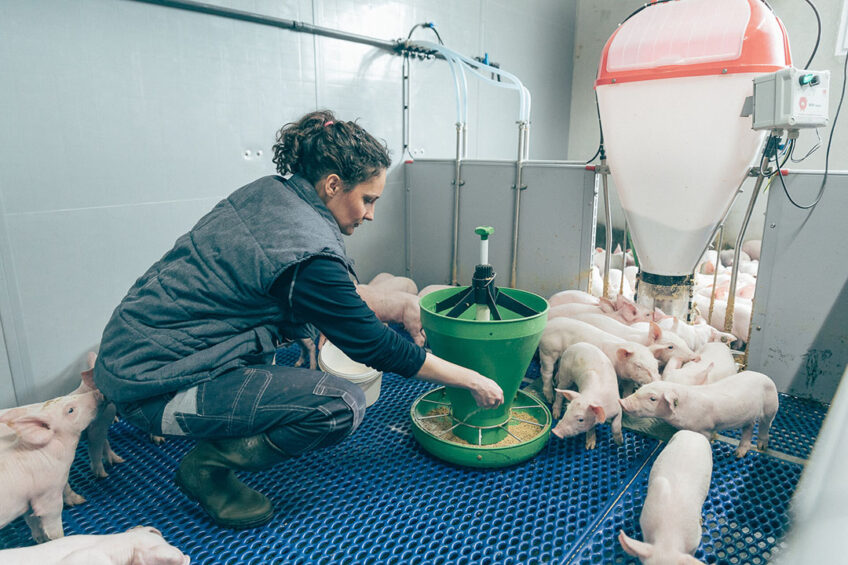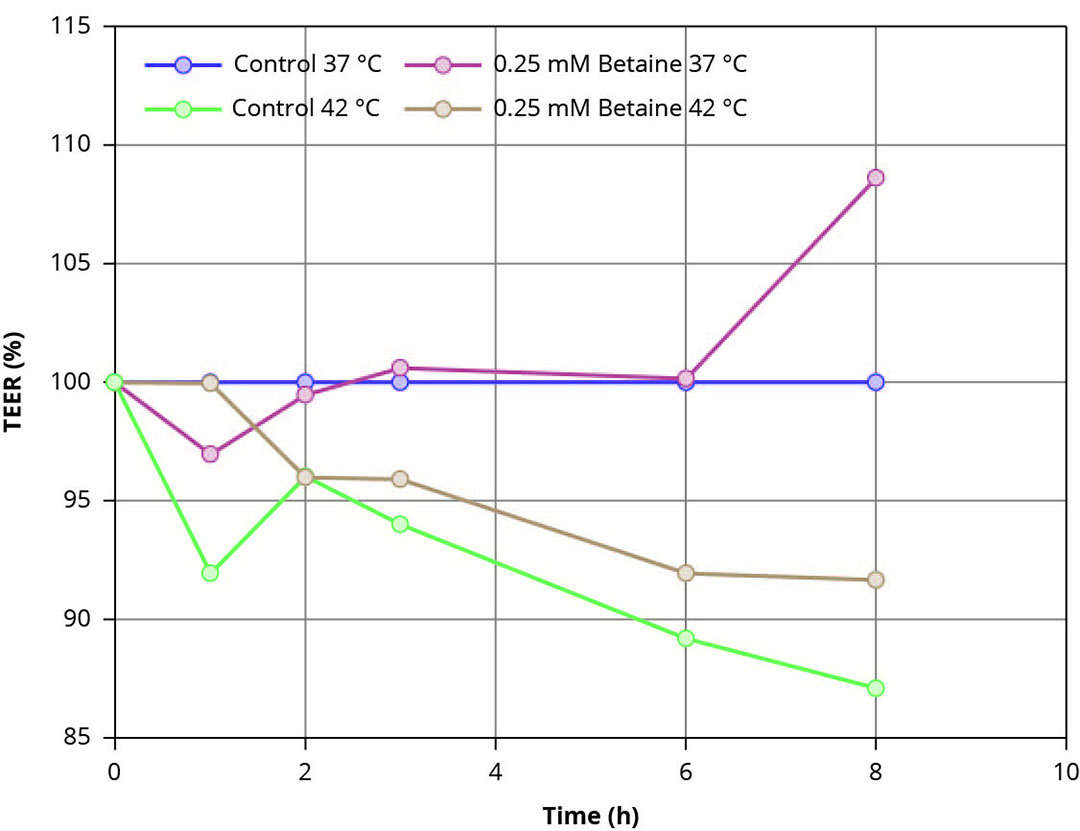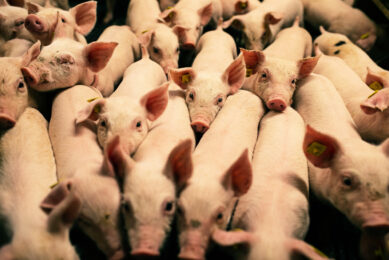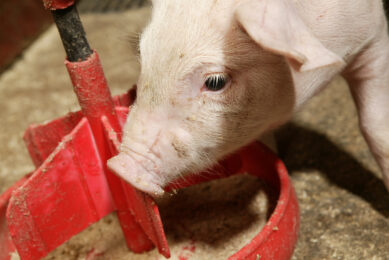Weaning piglets naturally: It’s possible and efficient!

Raising piglets with non-supplemented feed is swiftly becoming the new norm. However, this mode of production comes with its challenges. Farm management and secured feed formulation are 2 pillars to ensure complete digestive security but cannot do it all.
Weaning is a critical period in pig management, often associated with diarrhoea, digestive problems, and growth delays. Medications as antibiotics or therapeutical zinc oxide, represent efficient solutions to manage this gut health issue. However, the emergence of antibiotic resistance is an issue taken seriously by governments, consumers, and pig producers. New production practices and alternative feed solutions are emerging to preserve human and animal health. To succeed, they need to ensure complete digestive security.
New era of production
Antibiotics and therapeutical zinc oxide relied on a direct inhibition of pathogen bacteria. Although effective, this approach was short-term and non-selective leading to an inhibition of the beneficial flora too. In this new era of production, swine nutritionists are now seeking to prevent pathogens translocation and development of pathogens thanks to a strong gut. In the gut, 3 systems cohabit and intertwine:
the gut microbiota with its proper balance between beneficial and pathogenic flora
the gut epithelium defence structure both by its barrier strength and immunity response
the gut wall balance to limit water flow into the lumen.
Results presented at the Zero Zinc Summit in 2019 highlighted that solutions which target only the flora are not able alone to compensate the withdrawal of therapeutical zinc oxide in prestarter feed. CCPA’s decades of expertise on piglet nutrition has highlighted that appropriate growth and well-being of piglets can be achieved when not only microbiota but also intestinal epithelium and gut wall balance are secured.
The digestive process secured
CCPA has developed a strong field of expertise around alternative solutions to manage digestive security around weaning. In the French context, therapeutical zinc oxide in piglet feeds was not allowed for a long time during the last 2 decades and the industry was quick to comply to antibiotic reduction plans. This knowledge allowed the development of an all-in-one product to offer a full protection of the gut.
First, the gut barrier integrity needs to be enhanced along with the protection of epithelium cells against the multiple stress and to reach an adequate immune response. Flavonoids are known to activate the Nrf2 pathway and allow the expression of cellular protection genes. Flavonoids do not only ensure an antioxidant uptake but go further by enhancing its natural defences. The effect of the blend of plant extracts on gut epithelium were studied both in vitro and in vivo. In a piglet CCPA trial, blood oxidative stress index was calculated as the ratio between Hydrogen Peroxide and Biological Antioxidant Potential (i.e., the ratio between the level of oxidation and the level of protection). CCPA solution was able to reduce this index, thus the piglets were better equipped to face oxidative stress. CCPA in vitro porcine intestinal cellular model highlighted that the plant extracts were able to decrease the gene expression of pro-inflammatory cytokines. Weaned piglets benefit from the properties of Scutellaria Baïcalensis, a natural solution patented by CCPA Group, after several years of proven use to protect mammary cells for milk-producing animals.
Second, the gut wall balance must be controlled for a proper intestinal comfort. Hypersecretion of water in the lumen is one of the sources of secretory diarrhoea. In humans, Crohn’s disease, or inflammatory bowel disease, has the same origin. An efficient treatment to treat this illness is SPC-Cereals, a food with antisecretory effect which inhibit the activation of chloride channels and thus, limits the secretion of ions and water in the lumen. CCPA has already used this knowledge of inducing anti-secretory factor by the inclusion of SPC Wheat, a specific raw material used in its creep and prestarter feeds range. Curcuma, Scutellaria baïcalensis and green tea extracts also have similar capacity to inhibit the activation of chloride channels of the gut mucosa and preventing high secretion of water in the lumen.
Finally, sodium gluconate, a prebiotic naturally produced in the gut, positively favours the beneficial flora. The prebiotic effect of sodium gluconate gives the advantages to Bifidobacteria and Lactobacilli. This action is also positive for gut epithelium with the measure of increased acetic and butyric acids concentrations, confirmed by CCPA experimental trial.
Figure 1 – Faecal intensity score in prestarter phase.

Successful approach with Immax
Directly issued from CCPA research, Immax is a synergetic complex of plant extracts (Scutellaria baïcalensis, curcuma, green tea extracts) and prebiotic source (sodium gluconate) which helps alleviate the multiple weaning challenges. CCPA solution was tested compared to a non-supplemented diet and a prestarter diet with therapeutical zinc oxide. The product improved the digestive comfort with a reduced faecal intensity score compared to the control treatment (Figure 1). This went without compromising the performances. Immax also led to a feed conversion ratio better than the control diet and comparable to the medicated feed in the post-weaning phase (Figure 2). The CCPA Group offers a total approach to succeed in demedication of piglet feeds, taking advantage of its years of experience. In it, the feed formulation and nutritional expertise are an essential basis to provide a secured and high-quality complete feed. In a post-weaning trial, Immax solution alone and the solution in the global CCPA approach were compared to a non-supplemented control and a therapeutical zinc oxide. The natural solution led to improved growth performance with higher ADG compared to the control, but the global CCPA approach ensured to reach optimal performances with levels close to the High Zinc treatment.
Figure 2 – Feed conversion ration in the post-weaning phase.

CCPA’s global approach has been widely spread and successful in the field with up to 50 g/d in average daily gain, feed conversion ratio decreased by 0.15 points and a reduction by 50% of individual treatment compared to competitors non-medicated piglet feeds. Confirming CCPA’s solution is effective at ensuring good piglet performance and ensuring comfort naturally.






